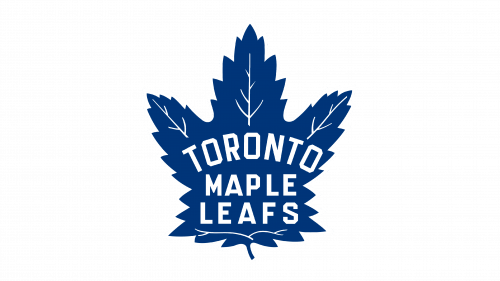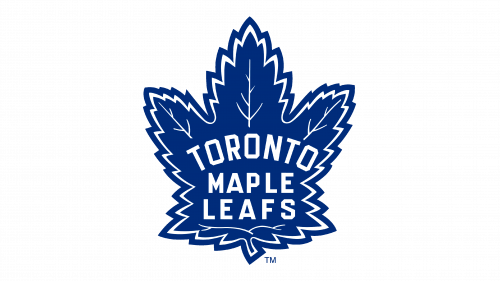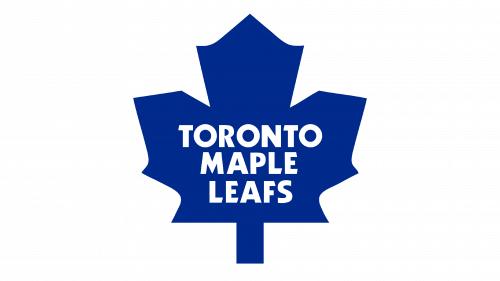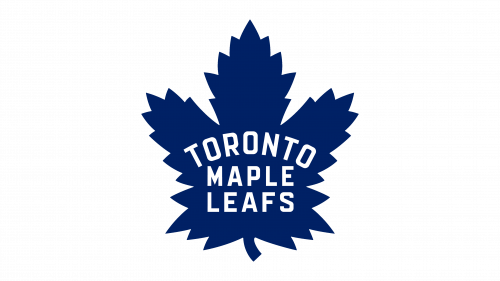Toronto Maple Leafs Logo
The club from Toronto, which is playing ice hockey professionally, holds a record in terms of the times it has changed its name. Toronto Maple Leafs has stuck with it for many years, though. At the same time, one thing remained the same, which is the city they play for. Montreal Canadiens are their main opponents. Although it had won the Stanley cup over ten times, sadly the last time was back in 1967.
Meaning and History
The club started out as Toronto Arenas at the beginning of the 19th century. In 1919, it changed owners and became Toronto St. Patricks. Ten years after being founded, the club was bought by a horseman and renamed again to Maple Leafs. For many, this name remains a mystery: why not Leaves? It turns out that the Canadian maple leaf has nothing to do with how the club is called, but it actually honored the legendary Canadian division of Maple Leaf Regiment, glorified for its heroism in the World War. In 1940, Dick Irwin, a coach who brought the football players to the Stanley Cup finals 8 times in 10 seasons, was no longer coaching it. It was not long, though, before they added another Stanley Cup to their achievements.
What is Toronto Maple Leafs?
This team of ice hockey players with a history spanning over a century is well known in Toronto. It is included in the NFL’s Original Six, which shows how many victories and losses the team has.
1917 – 1918
The inaugural designation of the squad was the Toronto Arenas, and their emblem was marked by its utter simplicity. It boasted a prominently displayed, capital letter “T,” scripted in a shade of blue, representing the city of Toronto. This initial symbol was a straightforward representation, devoid of elaborate details or embellishments, focusing solely on the city’s initial to convey the team’s identity. It depicted a simplistic approach to branding, aligning the team closely with its city of origin and establishing a foundational connection with local fans, all while emphasizing the essence of the team’s roots and initial stages of its development. The uncomplicated design laid the groundwork for the evolution of the team’s branding, allowing for growth and refinement in subsequent iterations.
1918 – 1919
The Toronto Arenas updated their emblem, incorporating the wordmark “Arenas” rendered in a deep blue hue, positioned behind the letter “T.” This adjustment infused a fresh dynamic while retaining the iconic element of the initial symbol. The enhanced design added a layer of specificity to the logo, situating the team’s name in concert with the city’s representation. The deep blue hue of the wordmark was selected to maintain consistency with the original design element, ensuring that the emblem remained coherent and true to its roots. The added wordmark emphasized the team’s identity more explicitly and enriched the logo with additional context and meaning, balancing both the city and team’s representation harmoniously in the revised design. The refined logo reflected a subtle yet significant evolution in the team’s visual identity, marking a progression in its branding journey while preserving its foundational elements.
1919 – 1922
In 1919, following a rebranding of the team to the Toronto St. Patricks, green was established as the principal color of the club’s palette. The third iteration of the Toronto St. Patricks emblem featured the name of the city, scripted in green, and positioned over the “StPats” wordmark. This transformation marked a significant shift in the team’s visual identity, aligning it with a new name and a refreshed color scheme. The placement of the city’s name above the team moniker emphasized the connection between the team and its locale, fostering a sense of community and shared identity. The use of green not only differentiated the team’s brand from its predecessors but also instilled a sense of renewal and vitality, reflecting the new chapter in the team’s history. The logo’s redesign was pivotal in redefining the team’s image, blending tradition with a newfound sense of purpose and direction, symbolizing growth and a deeper connection with the community it represents. The elegant scripting of both the city’s name and the wordmark added a refined touch to the emblem, consolidating the team’s presence in the sports domain with distinctiveness and style.
1922 – 1925
Between 1922 and 1925, the emblem for the team was depicted as a green, elliptical backdrop housing the “St. Pats” inscription, scribed in white within its confines. This visual representation provided a distinctive and concise identity, encapsulating the name in a straightforward yet impactful manner. The pill-like silhouette was a departure from conventional designs, embodying a unique aesthetic that distinguished the team in its respective domain. The contrast between the vibrant green backdrop and the stark white of the lettering ensured the emblem’s visibility and recognizability, fostering a sense of unity and allegiance among the team and its supporters. The utilization of a simple and unembellished wordmark within a distinctive shape highlighted the team’s commitment to maintaining a clear and effective brand identity while embracing innovation in design elements. The green, symbolizing growth and renewal, paired with the unadorned white scripting, encapsulated the essence of the team’s spirit during this period, reflecting both its heritage and its forward-looking approach to its role in the sporting landscape.
1925 – 1926
In 1926, the logo made a retrogressive leap, reverting to the design of 1920. It incorporated the wordmarks “Toronto” and “St Pats”, positioned at the upper and lower sections respectively. Each of the words was articulated in a hue of green that was more subdued and lighter. The emblem embraced its historical roots, reflecting a sense of nostalgia and respect for the team’s origins while adapting a fresher and more refined color palette. The green used was a softer iteration, lending a more subtle and harmonious appearance to the logo. The delicate balance between honoring the past and presenting an evolved identity was achieved with the reintroduction of previous design elements coupled with nuanced modifications. The placement of the city’s name and the team’s nickname served as a direct and clear representation of the team’s identity, while the lighter green offered a contemporary touch, signaling a period of renewal and transformation for the team. This blend of old and new signified the team’s enduring presence and adaptability in the ever-evolving world of sports.
1926 – 1927
In 1926, a pivotal shift occurred as Conn Smythe procured the franchise, ushering in the epoch of the Toronto Maple Leafs. The initial emblem they adopted featured a maple leaf, depicted in green and bearing a resemblance to a tree, enclosing the team’s name scripted in white within its contours. The symbolism of the maple leaf, a significant and revered emblem of Canada, represented a strong connection to national identity and heritage.
The choice of green was a distinctive departure from traditional colors, possibly retaining a link to the preceding St. Pats era. The encapsulation of the team’s moniker within the leaf underscored the integration of identity and symbol, reinforcing the essence of the team in its foundational phase under new ownership. The intertwined elements of the logo echoed a harmonious blend of tradition and innovation, reflecting a renewed vision and enduring legacy in the dynamic landscape of hockey.
1927 – 1938
A maple leaf, which was done in beautiful green color, served as a base. The step of the leaf was facing down. The name, which was written in three lines, was done in white uppercase letters across the whole leaf. The first word created a small arch, while the other two were written almost in a straight line. An interesting element was the split ends of the letters, which went great with an outer outline of the leaf.
1938 – 1963
The maple leaf has changed not only its shape but also acquired white veins. The two bottom leaf ends looked much shorter, which transformed it from a relatively round emblem to an emblem that had more of a vertical rectangle shape. It still stated the name in white uppercase letters, but the font had a very different style.
1963 – 1966, 1999 – 2011
The shade of blue used to color the leaf was now different. A more drastic change was an addition of a blue border that followed the outline of the leaf and was separated from it by a white line. This addition has looked like a continuation of the white veins that were added earlier. Otherwise, the logo has not been redrawn.
1966 – 1970, 2012 – 2017
The shape of the leaf has been redrawn again, so it had very minimal details. The leaf was just a solid blue icon of a very symmetrical leaf with pointy ends. The typeface has been changed too, but it was still a very simple, easy-to-read font with white, uppercase letters.
1970 – 1982
The new leaf design was even more minimalistic and had a lighter shade of blue. The letters got bolder and every single word was written in a straight line.
1982 – 2016
The color shade has been updated to a slightly darker one. The stem of the leaf got slightly thicker, while the rest of the leaf has not changed much. The wordmark has also stayed the same.
2016 – Today
The team played with the leaf design introduced back in 1963, which it reused earlier as well. This time, they only preserved the white veins, removing the white outline. It was also a darker shade. The wordmark, though, stayed the same as it was back in those days.
Winter Classic
During the winter season, the team used a maple leaf it had originally, except it changed the color to deep blue to go along with the team colors it had for quite a long time. The wordmark was kept original.


























